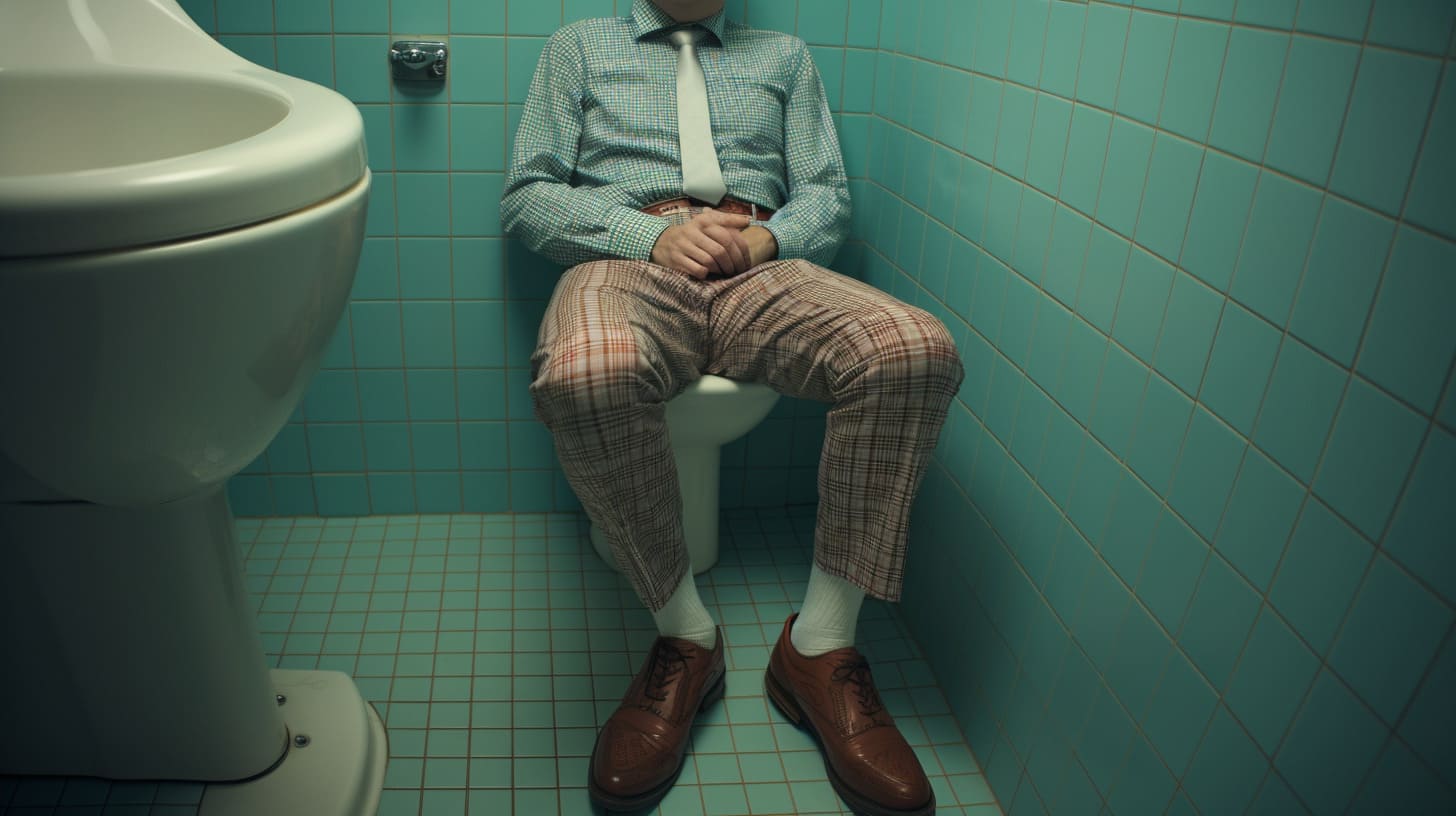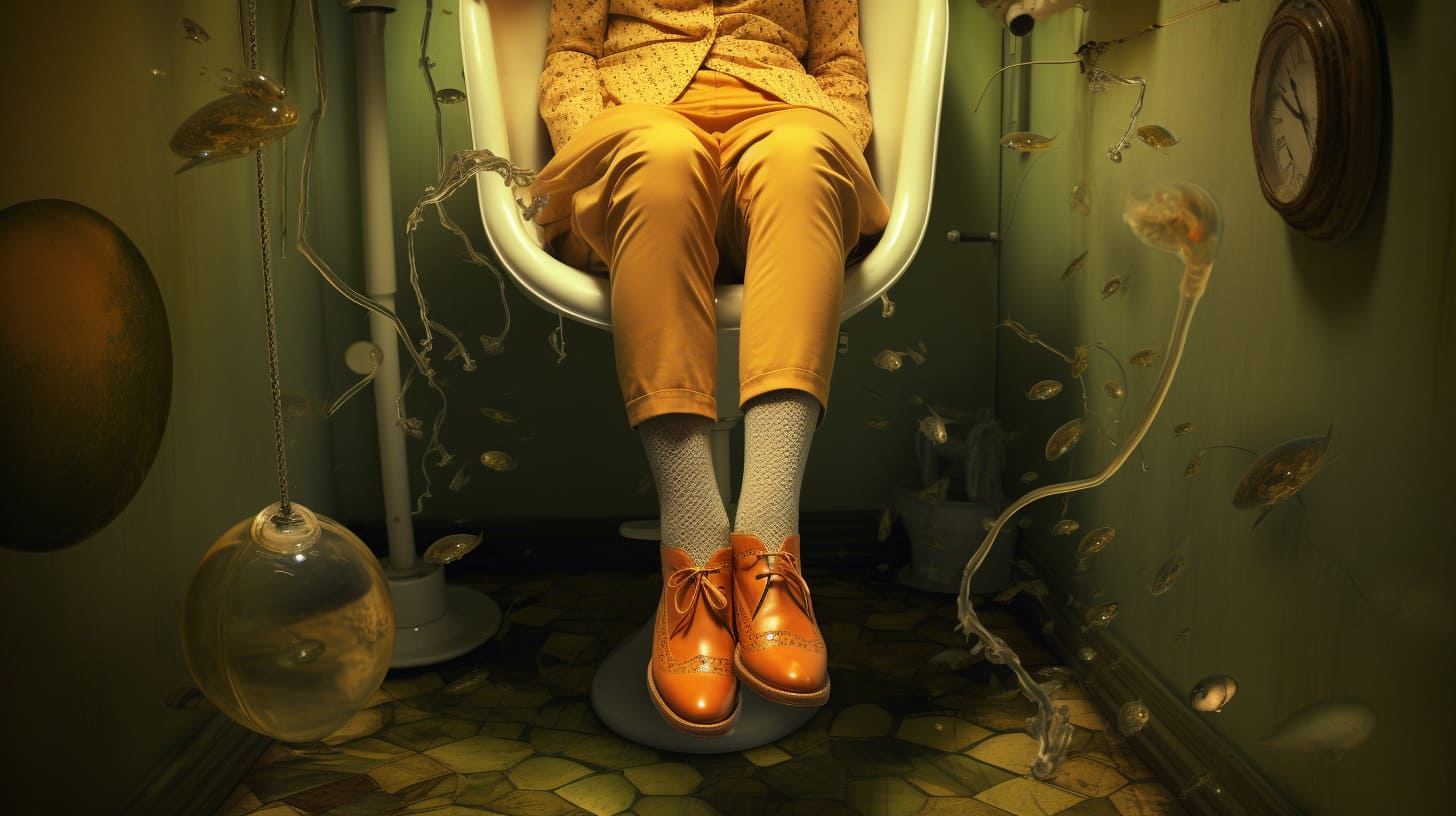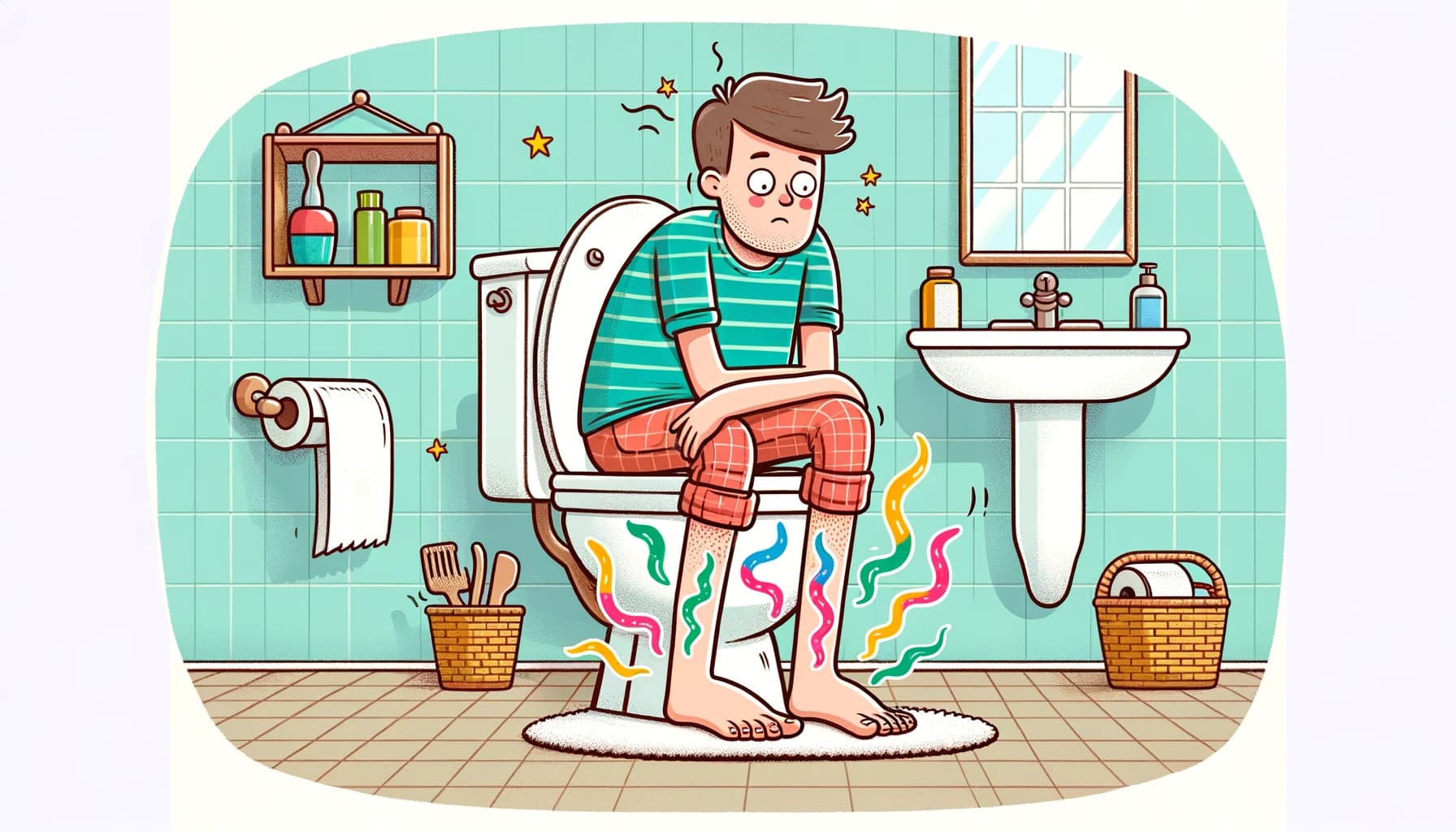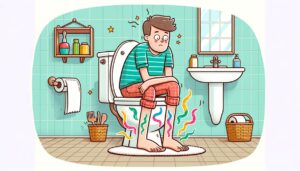Experiencing that peculiar tingling sensation in your legs while sitting on the toilet is a common yet often baffling occurrence. In this guide, we delve into the reasons behind the numbness, explore potential health implications, and provide you with practical solutions and remedies to prevent this uncomfortable experience.
Why Do Legs Go Numb on the Toilet?
"Pins and needles" in your legs while spending time on the toilet is scientifically known as paresthesia. This condition isn't just about the uncomfortable tingling; it's your body signaling that nerve activity is compromised. Here’s how:
- Nerve Compression: When you sit on the toilet, specific nerves, particularly the sciatic nerve, can be compressed between your toilet seat and the bones of your pelvis. This pressure can interrupt normal nerve function, leading to that familiar tingling or numbness.
- Reduced Blood Circulation: The angle and pressure of sitting on a toilet reduce blood flow to your lower limbs. Less blood flow means fewer nutrients and oxygen, which are vital for nerve and muscle health.
- Toilet Ergonomics: The design of traditional toilets often does not support the natural curve of your spine. This improper alignment can exacerbate pressure on your legs, contributing to the likelihood of developing symptoms of paresthesia.
Understanding these factors is the first step in addressing and mitigating the issue effectively.
Health Concerns Associated with Numb Legs
While occasional numbness might not be alarming, it's important to know when it might be a symptom of a larger issue:
- Peripheral Neuropathy and Diabetes: Persistent numbness can be a sign of peripheral neuropathy, often associated with diabetes, where nerve damage results from high blood sugar levels.
- Poor Circulation: If numbness is coupled with a change in the color of your skin, it might indicate circulation issues such as peripheral artery disease.
Here's when you should consider a consultation with a healthcare provider:
- Numbness persists long after standing up.
- You experience frequent episodes of numbness with no clear trigger.
- The numbness is accompanied by pain or a significant decrease in your ability to feel pressure or temperature.
Preventing Toilet-Related Leg Numbness
To keep the numbness at bay, consider these practical adjustments in your bathroom routine:
- Watch Your Time: Try to keep your bathroom visits brief; prolonged sitting is a primary culprit.
- Mind Your Posture: Sit up straight and avoid leaning forward when seated. Maintaining proper spinal alignment reduces nerve compression.
Using ergonomic bathroom aids can significantly reduce the risk of numbness:
- Elevated Toilet Seats: Raising the height of your toilet seat can lessen the bend in your hips and knees, easing pressure on your sciatic nerve.
- Footrests or Squatty Potties: These tools help maintain a more natural and squat-like position, aligning your rectum for easier elimination and reducing strain on your legs.
The impact of these aids can be quite effective, offering a simple solution to a nagging problem.
Immediate Remedies for Restoring Circulation
If you do find your legs tingling, here are some immediate actions to help restore circulation and sensation:
- Movement Techniques:
- Wiggle your toes and rotate your feet to kickstart circulation.
- Stand up slowly and stretch your legs gradually to encourage blood flow.
Here are three specific stretches that can aid in quicker recovery of sensation and circulation:

- Toe Points and Flexes: While seated, point your toes down and then flex them back towards your shin repetitively.
- Leg Extensions: Extend your leg outward and hold for a few seconds; repeat alternating between legs.
- Standing Up Slowly: After finishing, rise gradually to your feet, pausing if you feel too light-headed.
These techniques can be seamlessly integrated into your routine, offering a quick fix to an irritating problem while also enhancing your overall bathroom experience.
By understanding the causes and implementing these practical measures, you can mitigate the discomfort of toilet-related leg numbness and maintain a healthier, more comfortable lifestyle.
Recognizing Serious Symptoms
It’s not uncommon to experience a temporary loss of sensation in your legs during a long toilet session, often brushed off as a trivial annoyance. However, being able to distinguish between normal, fleeting numbness and potentially serious symptoms is crucial for your overall health. Let’s explore how to spot signs that may require immediate medical attention.
Transient vs. Persistent Numbness
- Transient Numbness: Typically, this type only lasts a few minutes and resolves with movement. It’s mostly harmless and caused by the temporary compression of nerves.
- Persistent Numbness: If the numbness lasts for a prolonged period, recurs frequently, or is accompanied by other unsettling symptoms, it deserves attention.
Warning Signs to Look for
- Deep Vein Thrombosis (DVT): If numbness is associated with swelling, redness, or warmth in the leg, it could point to DVT, a serious condition where a blood clot forms deep in your veins.
- Intense Pain or Discoloration: Pain that intensifies, rather than alleviates upon standing, or noticeable changes in skin color or temperature may indicate significant vascular problems.
It’s essential to heed these warnings and seek immediate medical evaluation to prevent more serious complications. Acting early can be a true lifesaver.
Making Lifestyle Adjustments for Better Health
Understanding the impact of our daily habits on our health can lead to longevity and improved well-being. For those frequently experiencing leg numbness while on the toilet, incorporating some lifestyle adjustments can make a notable difference. Here, we consider both general wellness tips and specific changes that relate to bathroom behaviors.
General Lifestyle Enhancements
- Regular Exercise: Engaging in routine physical activity helps promote better circulation and nerve function.
- Healthy Diet and Hydration: Including a balanced diet rich in vitamins and minerals supports nerve health, while staying hydrated aids in maintaining good circulation.
Bathroom-Specific Adjustments
- Alternative Seating Options: Consider using a raised toilet seat or a footrest to alter your position and alleviate pressure on the lower limbs.
- Warm Environment: Keeping a warmer bathroom environment can help maintain blood circulation, reducing the likelihood of your legs falling asleep.
Each of these suggestions not only promotes better bathroom experiences but also contributes to a holistic approach to health that benefits your entire body.
Conclusion
Through this exploration, we've gleaned insights into the curious phenomenon of legs falling asleep on the toilet. Recognizing the difference between harmless numbness and symptoms of potential health concerns is invaluable. Making informed lifestyle changes can profoundly impact our everyday comfort and long-term health.

We encourage taking note of how your body reacts to certain postures and maintaining open communication with health professionals over any persistent or concerning symptoms. Remember, a small adjustment in habits could lead to significant health benefits. Stay proactive about your health and always prioritize well-being over discomfort.



0 Comments